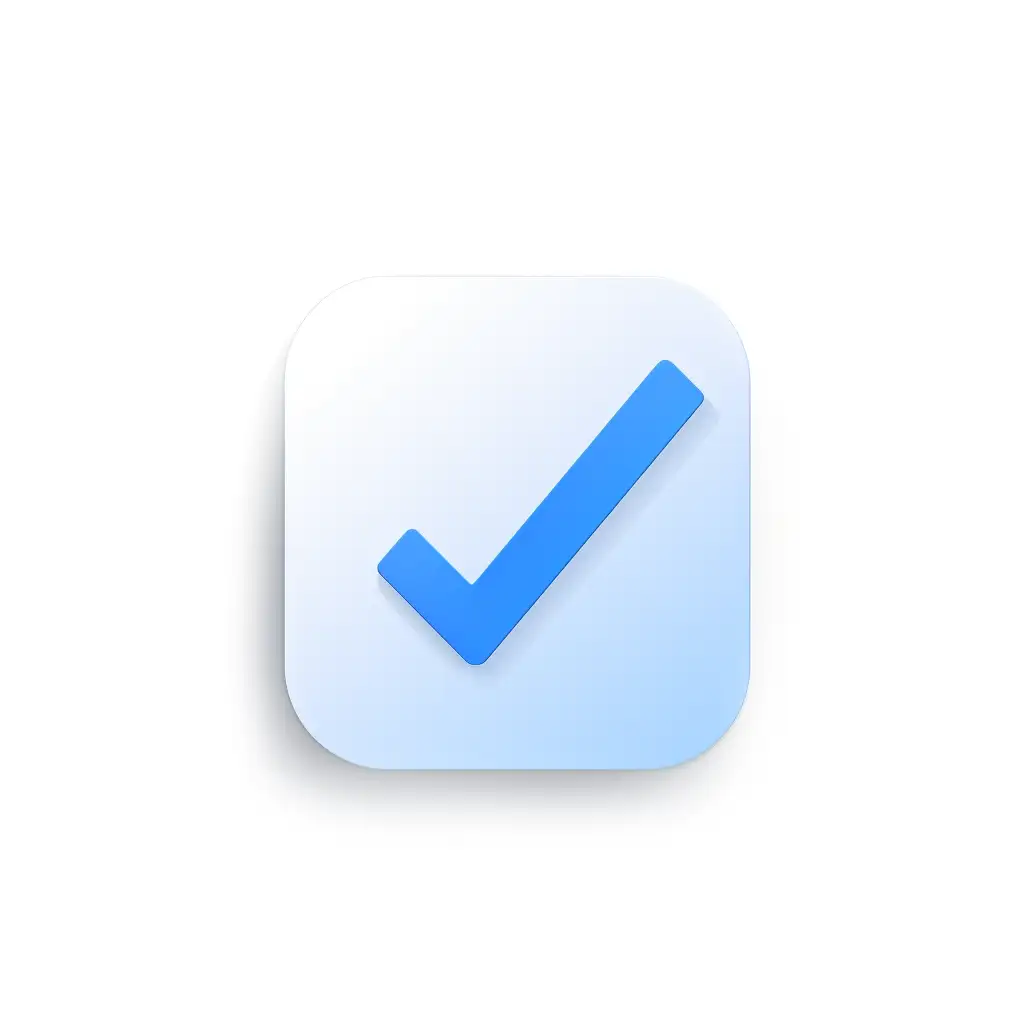What Are 401(k), 403(b), 408(k), and 501(c) Plans?

What is a 401(k) Plan?
A 401(k) plan stands as one of the most recognized and utilized tax-advantaged retirement savings vehicles offered by employers across the United States. Named after the section of the U.S. Internal Revenue Code that established it, the 401(k) plan enables employees to save and invest a portion of their paycheck before taxes are deducted, which can lead to significant tax savings and growth in investments over time.
The Mechanics of a 401(k) Plan
Employee Contributions: Employees elect to contribute a portion of their pre-tax salary to their 401(k) account. These contributions reduce the employee’s taxable income, providing an immediate tax benefit by lowering the amount of income tax owed in the year of the contribution.
Employer Match: Many employers offer to match employee contributions up to a certain percentage of their salary. This match can vary widely between employers but significantly enhances the value of the 401(k) plan as it represents additional funds contributing towards the employee’s retirement savings.
Tax-Deferred Growth: The investment gains in a 401(k) plan are not taxed until the money is withdrawn, typically in retirement. This allows the savings to grow tax-deferred, compounding over time without being diminished by taxes, which can result in a larger retirement fund.
Investment Options: 401(k) plans usually offer a range of investment options, including stocks, bonds, and mutual funds. Employees can choose how their contributions are invested, allowing them to tailor their investment strategy to their risk tolerance and retirement goals.
Benefits of a 401(k) Plan
Tax Advantages: Contributions reduce taxable income in the year they are made, potentially lowering the overall tax burden. Additionally, the tax-deferred growth allows investments to grow more rapidly.
Employer Match: The employer match is essentially free money that can significantly boost retirement savings.
High Contribution Limits: The contribution limits for 401(k) plans are generally higher than those for IRAs, allowing for more substantial retirement savings. For example, in 2023, the contribution limit for employees is $20,500, with an additional catch-up contribution of $6,500 for those aged 50 and older.
Loan and Hardship Withdrawals: Some plans allow for loans or hardship withdrawals, providing some financial flexibility in emergencies. However, these options can impact the growth of retirement savings and are subject to specific rules and limitations.
Contribution Limits and Considerations
For 2024, the IRS has updated the employee contribution limit for 401(k) plans. The new limit is set higher than the previous year to accommodate for inflation and cost-of-living adjustments. Additionally, individuals aged 50 and over are eligible for an enhanced catch-up contribution, enabling them to save an increased total amount in their 401(k) plan. As with each year, these limits are reviewed and adjusted by the IRS to reflect changes in the economy and inflation rates.
Making the Most of Your 401(k) Plan
To fully leverage a 401(k) plan, employees are encouraged to:
Maximize Contributions: If possible, contribute the maximum amount allowed, especially if your employer matches contributions.
Diversify Investments: Choose a mix of investments to balance risk and potential returns over time.
Monitor and Adjust: Regularly review and adjust your investment choices and contribution levels based on your financial situation, retirement goals, and market conditions.
Understanding 403(b) Plans
403(b) Plans for Non-Profits
403(b) plans, also known as Tax-Sheltered Annuities (TSAs), are retirement savings plans specifically designed for employees of non-profit organizations, public schools, and certain government entities. Similar in many ways to the more widely recognized 401(k) plans, 403(b) plans offer unique advantages and features tailored to the sectors they serve.
Key Features of 403(b) Plans
Eligibility and Contributors: These plans are available to employees of 501(c)(3) non-profit organizations, public education institutions, and some religious organizations. This eligibility criterion ensures that employees working in these vital yet often less lucrative sectors have access to effective retirement saving tools.
Tax Advantages: Like 401(k) plans, 403(b) plans allow employees to defer a portion of their income into a retirement account before taxes are applied. This pre-tax contribution reduces the employee’s taxable income, offering immediate tax savings. Additionally, the investment growth in these accounts is tax-deferred until withdrawal, typically during retirement, when the individual may be in a lower tax bracket.
Contribution Limits: The contribution limits for 403(b) plans are identical to those of 401(k) plans, allowing for significant tax-advantaged savings. For 2023, employees can contribute up to $20,500, with an additional catch-up contribution of $6,500 for those aged 50 and older.
Distinctions from 401(k) Plans
While 403(b) and 401(k) plans share many similarities, several key differences are worth noting:
Investment Options: 403(b) plans traditionally offered annuities as the primary investment option, though many now also provide access to mutual funds. This contrasts with 401(k) plans, which predominantly feature a broader range of mutual funds and other investment vehicles.
Eligibility for Special Catch-up Contributions: Employees with 15 or more years of service with the same non-profit or public school may be eligible for additional catch-up contributions beyond the standard limits, further enhancing their ability to save for retirement.
ERISA Exemption: Some 403(b) plans are not subject to the Employee Retirement Income Security Act (ERISA), particularly those that do not offer employer contributions. This can lead to lower administrative costs but also means fewer protections and requirements compared to ERISA-covered plans.
Benefits of Participating in a 403(b) Plan
Tax-Efficient Savings: The ability to make pre-tax contributions, coupled with tax-deferred growth, provides immediate tax benefits and the potential for increased compound growth over time.
Employer Contributions: While not mandatory, many employers offer matching contributions to 403(b) plans, further enhancing the potential retirement savings.
Flexible Investment Options: With the evolution of 403(b) plans, participants often have access to a variety of investment options, including both annuities and mutual funds, allowing for tailored investment strategies.
Loans and Hardship Withdrawals: Similar to 401(k) plans, many 403(b) plans offer options for loans and hardship withdrawals, providing financial flexibility in emergencies.
Maximizing Your 403(b) Plan
To fully benefit from a 403(b) plan, participants should consider:
Maximizing Contributions: Especially if your employer offers matching contributions, aim to contribute the maximum amount allowable or at least enough to get the full employer match.
Diversifying Investments: Choose a mix of investments to help manage risk and potential returns, considering your retirement timeline and risk tolerance.
Regularly Reviewing Your Plan: Adjust your contributions and investment choices as your financial situation, goals, and market conditions change.


The 408(k) Simplified Employee Pension Plan
Simplified Pensions with 408(k)
The 408(k) plan, more commonly referred to as a Simplified Employee Pension (SEP) plan, is a straightforward, flexible retirement savings option designed specifically for small businesses and self-employed individuals. This plan offers an easier way to contribute towards retirement, particularly for businesses that may not have the resources to manage more complex retirement plans like 401(k)s.
Key Features of a 408(k) SEP Plan
Simplified Administration: One of the primary advantages of a 408(k) plan is its ease of administration. Unlike traditional pension plans, it requires less paperwork and has lower operational costs, making it an attractive option for small businesses.
Eligibility Criteria: SEP plans are available to any size of business but are particularly well-suited for small businesses and self-employed individuals. Employees must be at least 21 years of age, have worked for the business in at least 3 of the last 5 years, and received a minimum compensation (as set by the IRS) in the previous year to be eligible.
Employer Contributions: Only the employer contributes to a SEP plan. These contributions are tax-deductible for the business and are made directly to individual retirement accounts (IRAs) set up for each eligible employee. Employers have the flexibility to decide how much to contribute each year, which can be beneficial in years with fluctuating profits.
Contribution Limits: The contribution limits for SEP plans are generous. Employers can contribute up to 25% of an employee’s compensation or a maximum limit set by the IRS (which is subject to annual adjustments), whichever is less.
Benefits of a 408(k) SEP Plan
Tax Benefits for Employers and Employees: Contributions made by the employer are tax-deductible, reducing the taxable income of the business. For employees, contributions grow tax-deferred until withdrawal in retirement.
Flexibility in Contributions: Employers are not required to make contributions every year. This flexibility is particularly useful for businesses with variable cash flow.
High Contribution Limits: The higher contribution limits compared to other retirement plans like 401(k)s make SEP plans an excellent way for employees to build a substantial retirement fund.
How 408(k) Differs from Other Retirement Plans
Employer-Only Contributions: Unlike 401(k) and 403(b) plans, employees cannot make their own contributions to a SEP plan; only employers can contribute.
Simplified Management and Lower Costs: SEP plans require less administrative work and have lower setup and operating costs compared to traditional pension plans.
Flexible Annual Contributions: The ability for employers to adjust contributions each year based on business performance is a unique feature of SEP plans.
Maximizing the Benefits of a 408(k) SEP Plan
For small business owners, implementing a SEP plan can be a powerful tool in attracting and retaining employees by offering a significant retirement benefit. For employees, understanding the plan’s features and the impact of employer contributions on their long-term savings is crucial.
Exploring 501(c) Non-Profit Organizations
Non-Profit Organizations and 501(c) Status
The 501(c) designation, a classification under the United States Internal Revenue Code, is pivotal for non-profit organizations. This status grants tax-exempt status to various types of non-profit and charitable organizations, thereby playing a crucial role in their financial management and fundraising activities.
Understanding 501(c) Designation
Types of 501(c) Organizations: The 501(c) category encompasses several types of organizations, including charitable, religious, educational, scientific, literary, and other similar entities. The most commonly recognized is 501(c)(3), which includes charities and non-profit educational organizations.
Tax-Exempt Status: Organizations with 501(c) status are exempt from federal income tax. This exemption is vital as it allows these organizations to dedicate more resources to their mission and activities rather than to tax liabilities.
Eligibility Requirements: To qualify for 501(c) status, an organization must meet specific criteria set by the IRS, including being organized and operated exclusively for exempt purposes, and none of its earnings may inure to any private shareholder or individual.
Impact on Employee Retirement Options
Non-profit organizations with 501(c) status have unique considerations when it comes to providing retirement benefits to their employees:
403(b) Retirement Plans: One of the significant implications of the 501(c) status is the eligibility to offer 403(b) retirement plans to their employees. These plans are similar to 401(k) plans but are specifically designed for employees of public schools, non-profit organizations, and certain ministers.
Pension Plans: In addition to 403(b) plans, some non-profit organizations may opt to provide traditional pension plans, though these are becoming less common due to their higher administrative costs and funding requirements.
Other Retirement Benefits: Non-profits might also offer other types of retirement benefits, such as SEP IRAs or SIMPLE IRAs, which are simpler and less costly to administer than traditional pension plans.
Challenges and Considerations
Funding Limitations: Due to the nature of non-profit funding, these organizations often operate with budget constraints, which can impact the level and type of retirement benefits they can offer.
Attracting and Retaining Employees: Offering competitive retirement benefits is crucial for non-profits to attract and retain qualified employees, especially when they might not be able to offer salaries as high as the for-profit sector.
Regulatory Compliance: Non-profits must ensure that their retirement plans comply with federal regulations, including those set by the IRS and the Employee Retirement Income Security Act (ERISA), if applicable.

Comparing Retirement Plans: 401(k) vs. 403(b) vs. 408(k)
Understanding the differences between 401(k), 403(b), and 408(k) plans is essential for employees and employers alike to make informed decisions regarding retirement planning. Each plan has unique characteristics tailored to different employment sectors and sizes.
401(k) Plans
Eligibility: Primarily offered by private, for-profit organizations. Almost all employees of companies that offer a 401(k) plan are eligible to participate.
Contribution Limits: As of 2024, employees can contribute up to a specified limit set by the IRS, with additional catch-up contributions allowed for those aged 50 and over.
Tax Benefits: Contributions are made pre-tax, reducing taxable income. Taxes on contributions and earnings are deferred until withdrawal.
Employer Matching: Many employers offer a matching contribution, which can vary in amount and structure.
Investment Options: Typically offers a wide range of investment options, including mutual funds, stocks, and bonds.
403(b) Plans
Eligibility: Designed for employees of non-profit organizations, public schools, and certain religious organizations.
Contribution Limits: Similar to 401(k) plans, with the same annual contribution limits. Additionally, some long-term employees may qualify for increased contribution limits.
Tax Benefits: Contributions are pre-tax, and taxes on earnings are deferred. Some plans offer a Roth option for post-tax contributions with tax-free withdrawals.
Employer Matching: Less common than in 401(k) plans, but some non-profit employers do offer matching contributions.
Investment Options: Historically focused on annuities, but many plans now also offer mutual fund options.
408(k) Plans (SEP Plans)
Eligibility: Ideal for small businesses and self-employed individuals. Employers can set eligibility requirements based on factors like age and years of service.
Contribution Limits: Higher than 401(k) and 403(b) plans. Employers can contribute up to a certain percentage of each employee’s compensation or a specified annual limit set by the IRS.
Tax Benefits: Employer contributions are tax-deductible, and employees benefit from tax-deferred growth of their investments.
Employer Matching: Only the employer contributes to SEP plans, and they must contribute the same percentage to all eligible employees’ accounts.
Investment Options: Contributions are typically made into an Individual Retirement Account (IRA) for each employee, offering a range of investment choices similar to traditional IRAs.
Key Differences
Eligibility and Sector Focus: 401(k) plans are widespread in the for-profit sector, 403(b)s are tailored for non-profit and public sector employees, while 408(k) plans are best suited for small businesses and self-employed individuals.
Contribution Limits and Flexibility: 408(k) plans generally offer higher contribution limits and more flexibility in terms of annual employer contributions.
Tax Treatment and Employer Matching: All three plans offer tax-deferred growth, but there are differences in employer matching policies and the availability of Roth options.
Investment Choices: 401(k) and 403(b) plans typically offer a broader range of investment options compared to 408(k) plans.
FAQs on Retirement Plans
Q1: What are the main differences between a 401(k) and a 403(b) plan?
Answer: While both 401(k) and 403(b) are retirement savings plans that offer tax advantages, they cater to different types of employees. A 401(k) is offered by private, for-profit companies, whereas a 403(b) is designed for employees of non-profit organizations, public schools, and religious groups. The investment options in 403(b) plans were traditionally limited to annuities, but now they often include mutual funds similar to 401(k) plans. Additionally, some 403(b) plans offer special catch-up contribution allowances for long-term employees.
Q2: Can I contribute to both a 401(k) and a 403(b) plan in the same year?
Answer: Yes, you can contribute to both a 401(k) and a 403(b) plan in the same year if you are eligible for both. However, the IRS sets limits on the total amount you can contribute to these plans in a single year.
Q3: What is a 408(k) plan, and who is it suitable for?
Answer: A 408(k) plan, also known as a Simplified Employee Pension (SEP) plan, is suitable for small businesses and self-employed individuals. It allows employers to make contributions directly to their employees’ retirement accounts with less administrative complexity and higher contribution limits compared to 401(k) and 403(b) plans.
Q4: Are there any penalties for early withdrawal from these retirement plans?
Answer: Yes, generally, if you withdraw funds from your 401(k), 403(b), or 408(k) plan before age 59½, you may have to pay a 10% early withdrawal penalty in addition to income tax on the distribution. There are some exceptions to this rule, such as for hardship withdrawals or certain medical expenses.
Q5: How does employer matching work in these retirement plans?
Answer: Employer matching varies by plan and employer. In a 401(k) or 403(b) plan, employers may match a percentage of your contributions up to a certain limit. This match is essentially free money towards your retirement. SEP (408(k)) plans do not involve employee contributions; only the employer contributes, and they must contribute equally to all eligible employees.
Q6: Can I have multiple retirement accounts?
Answer: Yes, you can have multiple retirement accounts, such as a 401(k) and an IRA. However, keep in mind that IRS contribution limits apply across all accounts. Managing multiple accounts can also be more complex, so it may be wise to consult a financial advisor.
Q7: What happens to my retirement plan if I change jobs?
Answer: If you leave your job, you generally have several options for your retirement plan: leave the funds in your former employer’s plan, roll them over to your new employer’s plan (if allowed), roll them into an Individual Retirement Account (IRA), or withdraw the funds (potentially incurring taxes and penalties).
Q8: How do Roth options work in these retirement plans?
Answer: Roth options, available in some 401(k) and 403(b) plans, allow you to make after-tax contributions. While there’s no immediate tax deduction, your contributions and earnings grow tax-free, and qualified withdrawals in retirement are not taxed.
Q9: Are there limits to how much my employer can contribute to my retirement plan?
Answer: Yes, there are limits. For 401(k) and 403(b) plans, the total contribution limit (employee plus employer contributions) is capped by the IRS. For SEP plans, employer contributions are limited to a certain percentage of each employee’s compensation or a maximum annual amount as per IRS guidelines.
Q10: What is vesting in a retirement plan?
Answer: Vesting refers to the percentage of your employer’s contributions to your retirement plan that you have a right to if you leave the company. Employers may use different vesting schedules, meaning you gain ownership of employer contributions over time.

Disclaimer: The content provided on this webpage is for informational purposes only and is not intended to be a substitute for professional advice. While we strive to ensure the accuracy and timeliness of the information presented here, the details may change over time or vary in different jurisdictions. Therefore, we do not guarantee the completeness, reliability, or absolute accuracy of this information. The information on this page should not be used as a basis for making legal, financial, or any other key decisions. We strongly advise consulting with a qualified professional or expert in the relevant field for specific advice, guidance, or services. By using this webpage, you acknowledge that the information is offered “as is” and that we are not liable for any errors, omissions, or inaccuracies in the content, nor for any actions taken based on the information provided. We shall not be held liable for any direct, indirect, incidental, consequential, or punitive damages arising out of your access to, use of, or reliance on any content on this page.
Trusted By
Trusted by 3.2M+ Employees: 21 Years of Service Across Startups to Fortune 500 Enterprises
Join our ever-growing community of satisfied customers today and experience the unparalleled benefits of TimeTrex.










Strength In Numbers
Join The Companies Already Benefiting From TimeTrex
Time To Clock-In
Start your 30-day free trial!
Experience the Ultimate Workforce Solution and Revolutionize Your Business Today
- Eliminate Errors
- Simple & Easy To Use
- Real-time Reporting

Saving businesses time and money through better workforce management since 2003.
Copyright © 2025 TimeTrex. All Rights Reserved.

